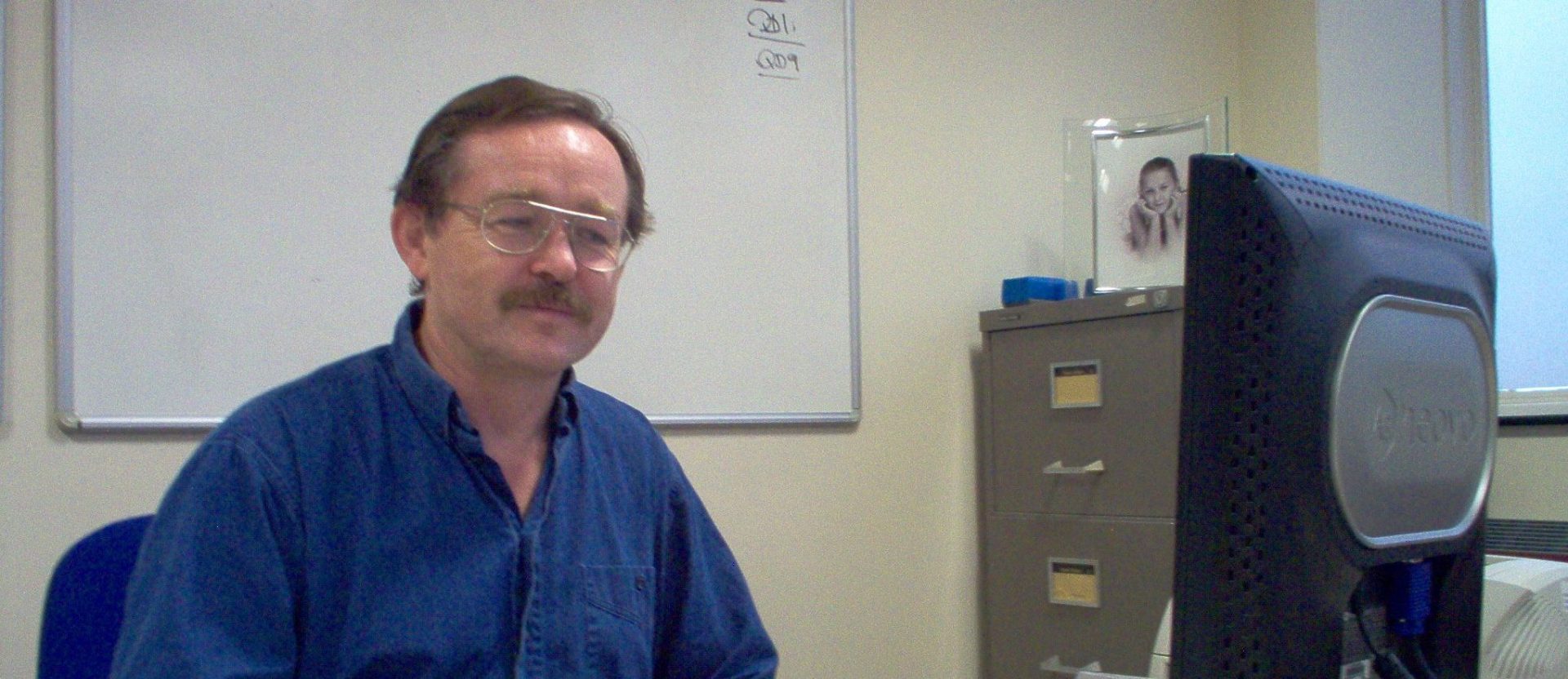Introduction

For much of my career, my research has been focussed on condensed matter physics. This has taken two forms. On the one hand, Ihave been interested in rare earth materials and their properties and on the other, I have looked at relativistic effects in materials. In more recent times I have concentrated on mathematical physics with interests in exactly soluble models within the relativistic quantum theory, superoscillations, knotted electromagnetic fields and in non-conventional forces such as curl forces and Lipkin’s zilches.
Mathematical Physics
My current research is all in mathematical physics. I have a number of projects going on, much of the work on them is being done by my research students.
Model Calculations within Relativistic Quantum Theory
I wrote a book on relativistic quantum theory (see publications) and I always have ideas for model calculations within this theory. Often they don’t amount to much, but sometimes they yield considerable insight.
Recent successes include:
- the observation that quantum backflow can occur in a system with angular momentum, leading to it being long-lasting;
- the discovery of some novel beam-like solutions of the Dirac equation;
- an understanding of the relativistic theory of quantum revivals;
- Looking at the Dirac oscillator from a rotating frame of reference.
Currently, we are looking at the spin of Dirac wavepackets from the point of view of an observer in a rotating frame of reference.
Superoscillations
Superoscillations can exist in a function that is band limited where in some regions of space the function can oscillate arbitrarily faster than its most rapidly varying Fourier component. We have built a wavepacket from harmonic oscillator eigenfunctions and developed a theory of its evolution.
Current projects in this area include:
- Looking at the evolution of superoscillations in a relativistic wavepacket;
- simulating natural oscillations in two dimensions and examining the statistical probability of superoscillations occurring.
Knotted Electromagnetic Radiation
Electromagnetic radiation is well described by Maxwell’s equations of classical electromagnetism. In recent years some exotic solutions of Maxwell’s equations have been (re)discovered where the light appears to knot around itself. Such knotting is found to be topologically stable.
We are examining the properties and underlying topology of these solutions. In particular, we are examining Lipkin’s zilches, little known conserved quantities in electromagnetism and what they can tell us about these solutions. We are also looking into suggesting ways of generating such solutions experimentally.
Curl Forces
Curl forces are forces that cannot be derived as the gradient of a potential and whose curl is not equal to zero. An example is the forces felt by nanoparticles in the presence of electromagnetic fields. A robust classical theory of these forces exists, although there are still some gaps in the theory to fill in. There is no quantum theory of such forces, so we are attempting to develop one.
Condensed Matter Physics
Theory of condensed matter physics is really a study of complexity and it tends to fall into two categories. On the one hand, there are theories where simple model Hamiltonians are written down. One has to hope that the model contains the physics one wishes to describe and if it does such an approach can yield great insight into difficult physical problems. These theories are usually not complete because they often contain arbitrary parameters which have to be fitted to gain agreement with experiment.
On the other hand, there are first principles calculations where we try to solve the complete problem, including the full Hamiltonian, but making approximations as necessary to make the problem tractable. These theories are surprisingly successful and have the advantage that they do not contain any arbitrary parameters. However, the difficulty with this approach is that the necessary approximations are often so gross that the theory cannot describe many of the most interesting phenomena. The worlds’ theory of condensed matter within this approach is Density Functional Theory (DFT). My research in condensed matter physics falls into this latter category.
Relativistic Effects in Solids
Einstein’s theory of relativity has a number of well-known exotic consequences such as the twin paradox and Lorentz-Fitzgerald contraction.
However, there are a number of less outlandish consequences of relativity and it has been a major theme of my research effort to determine where relativity plays a determining role in the properties of solids. In fact, there are a number of properties of materials that would be identically equal to zero if the Universe were governed by non-relativistic quantum theory, but are non-zero because the Universe is governed by relativistic quantum theory. Magnetism itself is ultimately a relativistic effect, however, that can be incorporated into non-relativistic theory. Examples of effects that re purely relativistic are magnetocrystalline anisotropy where relativity couple the spin of the electrons in the material to the lattice, and the polarisation dependence of a number of spectroscopies.
I have made a number of research contributions in both these areas. As elements get heavier relativistic effects play a greater and greater role, so mercury would be solid, not liquid, at Standard Temperature and Pressure, and gold would be a silver colour, if the world were governed by non-relativistic physics.
Rare Earth Materials
The magnetic properties of rare earth metals are determined by the 4f electrons which is the electron shell that is filling up as we proceed along the rare earths row of the periodic table. The 4f electrons are localised on an atom and behave very similarly to how they behave in an individual atom. On the other hand, the s-d electrons are fairly free and able to move through the lattice. They also carry information about the magnetism from one atom to the next via an indirect exchange interaction and create the exotic magnetic structures found in rare earth materials.
The real challenge in the theory of the rare earths is to treat all the electrons on an equal footing and yet for the theory to yield such different behaviour for different electrons. I have made a number of attempts at this through my PhD and subsequent career and the most successful were those that implemented self-interaction corrections to DFT.
Collaboration
I like to collaborate with like-minded physicists. Balazs Gyorffy (Bristol) oversaw the early careers of a large number of people in theory of condensed matter who went on to greater things.
I worked with Balazs on and off throughout my career and also with many of the other people who worked with him including Walter Temmerman, Dzidka Szotek, Julie Staunton, Hubert Ebert, Axel Svane, Herman Winter, Paul Durham and Eero Arola. I also think it is important to work closely with experimentalists and I have done that whenever I can, particularly the people who work on the XMAS beam-line at ESRF led by Simon Brown.
Other Interests
I have two further interests that I am always keen to work on, but where I have not yet done sufficiently good work to warrant a publication. The first is analytic number theory because it seems to me to be one of the most fundamental theories there is. Much of physics ultimately boils down to the properties of shapes and numbers. Secondly, there is atmospheric optics and three things about this subject fascinate me.
- I can do calculations on the atomic scale with only nine molecules of water (nanometres) and calculate its refractive index as a function of wavelength. That is all I require to describe many atmospheric optical phenomena such as the rainbow (kilometres). That atomic level calculation can tell you about things that are kilometres in size I find fascinating.
- It is possible to get some beautiful and profound insight into atmospheric optics around using very simple physics;
- there are a large number of atmospheric optical phenomenon that most people either don’t notice or think about. It gives me great pleasure when I can point them out.
